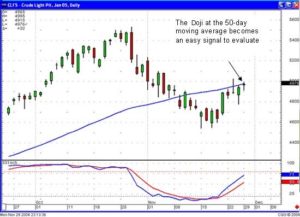Review topics for our recent free News Feeds. If you would like to receive these articles
immediately upon release, select XML for quick shortcut instructions to all our news and articles.
Candlestick Stock Analysis – Candlestick Stock Analysis
Anticipating the Stock Market – Anticipating the Stock Market
Bargain Stocks – Bargain Stocks

Trading Chinese Stocks – Trading Chinese Stocks
Low Stock Market Volume – Low Stock Market Volume
Oil Stocks – Oil Stocks
Trading Stocks in a Bear Market – Trading Stocks in a Bear Market
Earnings Reports – Earnings Reports
Stocks Trading at a Discount – Stocks Trading at a Discount
Selling Gold – Selling Gold
Buying US Treasuries – Buying US Treasuries
Retirement Stocks – Retirement Stocks
Consumer Stocks – Consumer Stocks
Buy Cheap Stocks – Buy Cheap Stocks
Find The Market Bottom with Candlesticks – Find The Market Bottom with Candlesticks
Trading During A Recession – Trading During A Recession
Basic Stock Trading – Basic Stock Trading
Foreign Investment – Foreign Investment
Stock Trading in a Volatile Market – Stock Trading in a Volatile Market
Picking Depressed Stocks – Picking Depressed Stocks
Trading Gold – Trading Gold
Investing with Candlesticks – Investing with Candlesticks
Successful Trading System – Successful Trading System
Trading Hot Stocks – Trading Hot Stocks
Candlestick Stock Trading – Candlestick Stock Trading
Conservative Stock Investing – Conservative Stock Investing
Profit from Stock Market Gains – Profit from Stock Market Gains
Follow Investment Capital – Follow Investment Capital
Stock Diversification – Stock Diversification
Best Stock Advice – Best Stock Advice
Making Money with Stocks – Making Money with Stocks
How to Sell Stock – How to Sell Stock
Start Stock Investing – Start Stock Investing
When to Sell Stock – When to Sell Stock
When to Buy Stocks – When to Buy Stocks
Stock Price Analysis – Stock Price Analysis
Candlestick Day Trading – Candlestick Day Trading
Strategic Stock Trading – Strategic Stock Trading
Picking Offshore Investments – Picking Offshore Investments
American Depository Receipts – American Depository Receipts
Stock Investment Profits – Stock Investment Profits
Investing in the Stock Market for Dummies – Investing in the Stock Market for Dummies
Risk Premium – Risk Premium
The Strike Price – The Strike Price
Stocks for Dummies – Stocks for Dummies
A Trailing Stop – A Trailing Stop
Stock Market Holidays -Stock Market Holidays
Use the Quick Ratio – Use the Quick Ratio
Finding Profitable Investments – Finding Profitable Investments
Balancing a Stock Portfolio – Balancing a Stock Portfolio
Low Risk Investments – Low Risk Investments
Stock Profits – Stock Profits
Stock Market Indecision – Stock Market Indecision
Picking Hot Stocks – Picking Hot Stocks
Identify Overpriced Stocks – Identify Overpriced Stocks
Best Trading Opportunity – Best Trading Opportunity
Trading Leverage – Trading Leverage
European Style Option – European Style Option
Investing in Japanese Recovery – Investing in Japanese Recovery
Investing For Long Term Profits – Investing For Long Term Profits
Trading Oil Stocks – Trading Oil Stocks
Trading Tactics – Trading Tactics
Sell Stock on the News – Sell Stock on the News
Market Correction – Market Correction
Best Trading Practices – Best Trading Practices
Trading Stock Volatility – Trading Stock Volatility
Trading with Japanese Candlesticks – Trading with Japanese Candlesticks
Identify Stock Buying Opportunities – Identify Stock Buying Opportunities
Get Ahead of the Market – Get Ahead of the Market
Analyzing Stocks – Analyzing Stocks
Buy Calls – Buy Calls
Buy Puts – Buy Puts
Consolidation Pattern – Consolidation Pattern
Trading Breakouts – Trading Breakouts
Stock Value Analysis – Stock Value Analysis
Stock Market History – Stock Market History
Business Cycle Investing – Business Cycle Investing
Useful Stock Investment Information – Useful Stock Investment Infomation
Trading Basics – Trading Basics
Stock Futures – Stock Futures
Stock Trading Signals – Stock Trading Signals
Interest Rate Investing – Interest Rate Investing
Consolidate Stock Gains – Consolidate Stock Gains
Long Term Stock Profits – Long Term Stock Profits
Stock Fundamentals – Stock Fundamentals
Increase Investment Profits – Increase Investment Profits
Buying Futures – Buying Futures
Fundamental versus Technical Analysis – Fundamental versus Technical Analysis
Use Puts to Protect Profits – Use Puts to Protect Profits
Successful Long Term Investment – Successful Long Term Investment
Stock Price Pattern Analysis – Stock Price Pattern Analysis
Predicting Stock Price – Predicting Stock Price
Successful Ratio Investing – Successful Ratio Investing
Technical Stock Investing – Technical Stock Investing
Investing in Earnings Potential – Investing in Earnings Potential
Stock Index Trading – Stock Index Trading
Earning Stock Trading Profits with Candlestick Signals – Earning Stock Trading Profits with Candlestick Signals
Be Your Own Stock Analyst – Be Your Own Stock Analyst
Stock Investment Success – Stock Investment Success
Gain Stock Investment Perspectives – Gain Stock Investment Perspectives
Online Stock Options Seminar – Online Stock Options Seminar
Interactive Stock Training Class – Interactive Stock Training Class
Learn Candlestick Analysis – Learn Candlestick Analysis
Be a Profitable Trader – Be a Profitable Trader
Basic Stock Market Training – Basic Stock Market Training
Online Training Webinars – Online Training Webinars
Selling Commodities – Selling Commodities
Buying Commodities – Buying Commodities
Fundamental of Trading Commodities – Fundamental of Trading Commodities
Commodity Pattern Analysis – Commodity Pattern Analysis
Purchase Commodities – Purchase Commodities
Futures Price – Futures Price
Analysis of Commodities – Analysis of Commodities
Commodity News Reports – Commodity News Reports
Basics of Commodity Trading – Basics of Commodity Trading
Commodities Research – Commodities Research
Commodity Supply And Demand – Commodity Supply And Demand
NYMEX Commodity Futures Price – NYMEX Commodity Futures Price
Successful Commodities Trading – Successful Commodities Trading
Learning about Commodity Futures – Learning about Commodity Futures
Commodity Price Breakout – Commodity Price Breakout
Trade Commodities – Trade Commodities
Commodity Price Reversals – Commodity Price Reversals
Commodity Price Trend -Commodity Price Trend
Commodity Volatility – Commodity Volatility
Coal Futures – Coal Futures
Sell Commodity Futures – Sell Commodity Futures
Commodity Market Liquidity – Commodity Market Liquidity
Commodity Value – Commodity Value
Long Term Commodity Investing – Long Term Commodity Investing
Tracking Commodity Profits – Tracking Commodity Profits
Bad Commodity Trading – Bad Commodity Trading
Best Commodities to Trade – Best Commodities to Trade
Investment and Trading Potential – Investment and Trading Potential
Commodity Options – Commodity Options
Commodity Futures Profits – Commodity Futures Profits
Commodity Price Patterns – Commodity Price Patterns
Scalping Commodity Profits – Scalping Commodity Profits
Commodity Futures Price – Commodity Futures Price
Commodity Trends – Commodity Trends
Winning with Commodities – Winning with Commodities
Commodity Market history – Commodity Market History
Commodity Trading Patterns – Commodity Trading Patterns
Learn Commodity Trading – Learn Commodity Trading
Agricultural Commodity – Agricultural Commodity
Commodity Trading Signals – Commodity Trading Signals
Basic Commodity Information – Basic Commodity Information
Commodity Futures Options – Commodity Futures Options
Commodity Futures Trading – Commodity Futures Trading
Technical Commodity Analysis – Technical Commodity Analysis
Live Cattle Commodity Trading – Live Cattle Commodity Trading
Fundamental Commodity Analysis – Fundamental Commodity Analysis
Commodity Futures Equivalent – Commodity Futures Equivalent
Technical Commodity Trading – Technical Commodity Trading
Commodity Trading System – Commodity Trading System
Traded Commodities – Traded Commodities
Hedging Commodities – Hedging Commodities
Trading Commodity Futures – Trading Commodity Futures
Market Commodities – Market Commodities
Beginning Commodity Futures Trading – Beginning Commodity Futures Trading
Diversifying a Stock Portfolio – Diversifying a Stock Portfolio
Trading Momentum Stocks – Trading Momentum Stocks
Stock Market Volatility – Stock Market Volatility
Equity Market – Equity Market
Criteria for Buying Stocks – Criteria for Buying Stocks
Mid Cap Stocks – Mid Cap Stocks
Investment Capital – Balancing Risk Vs. Opportunity
Support and Resistance Zones – Support and Resistance Zones
Stock Market Report – Rolling With The Changes
Stock Quote – It’s Necessity in Today’s Electronically Driven Markets
Online Stock Market Investing – Online Stock Market Investing
Stock Investing Ideas – Stock Investing Ideas
Penny Stock Investing – Penny Stock Investing
Small Cap Stock Investing – Small Cap Stock Investing
Basics of Stock Investing – Basics of Stock Investing
Stock Worth Investing In – Stock Worth Investing In
Moving Average Trading – Moving Average Trading in Technical Analysis
Stock Market Trading Tips – Stock Market Trading Tips
Holiday Gifts – Holiday Gifts; Give the Unique Gift of Education for Individuals New to Investing in the Markets
Stock Market Trading Day – Stock Market Trading Day
Penny Stocks Trading – Penny Stocks Trading
How to Trade Forex – How to Trade Forex
Foreign Exchange Trade – Foreign Exchange Trade
Day Trading Options – Day Trading Options
Forex Mini Account – Forex Mini Account
Day Trading Futures – Day Trading Futures
Trading Fibonacci – Trading Fibonacci
Stock Trading Advice – Stock Trading Advice
Trading to Win – Trading to Win
Trading Success – Trading Success
Buying Margin – Buying “on” Margin
Currency Options – Currency Options
Options Trading Strategies – Options Trading Strategies
Trading Currency Online – Trading Currency Online
Forex Strategy – Forex Strategy
Buying on Margin – Buying on Margin
Currency Rates – Currency Rates
Stocks Shares – Stocks Shares
Trading Journal – Trading Journal
Bearish – Bearish
Buying Currency – Buying Currency
Sell Stock – Sell Stock and Buy Stock with Technical Analysis
Purchase Stock – Purchase Stock Options
Understanding the Stock Market – Understanding the Stock Market
Online Stock Trade – Steps for Placing an Online Stock Trade
Dow Theory – Dow Theory
Technical Analysis of Stock – Technical Analysis of Stock
Commodity Trading Online – Commodity Trading Online
Sell Currency – Sell Currency
Blog Articles – August 2009
Buy and Sell Stocks
Sell Short
Dividend Yield
Buy Online Shares
Future Contracts
Futures Trade
Futures Commodities
Investment Adviser – Investment Adviser
Buy Mutual Funds – Buy Mutual Funds
Buy Options – Buy Options
Technical Analysis Software – Technical Analysis Software
Currency Futures – Currency Futures
Calls and Puts – Calls and Puts
Forex Trading Software – Forex Trading Software
Trade Stocks Online – You Want to Learn to Trade Stocks Online?
Trading Options Online – Trading Options Online
Blog Articles – July 2009
FX Trader
Commodity Trader
Forex Technical Analysis
Trading Course
Trade Account
Buying Stocks
Trading Volume
Stock Buying
Sell Stock
Buy Forex
Currency Trade – Currency Trade
Day Trading Tips – Day Trading Tips
Stock Analysis for Trading Gaps – Stock Analysis for Trading Gaps at the Bottom and Top of a Trend
Margin Call – What is a Margin Call
Foreign Exchange Market – Foreign Exchange Market
Forex Review – Forex Review
Trading Account – Trading Account
Blog Articles – June 2009
Sell Shares
Trading Day
Currency Trading Online
Brokerage Account
Margin Account
Margin Buying
Trading Forex Online
Option Trading
Archived RSS Feeds




